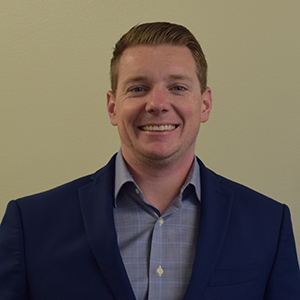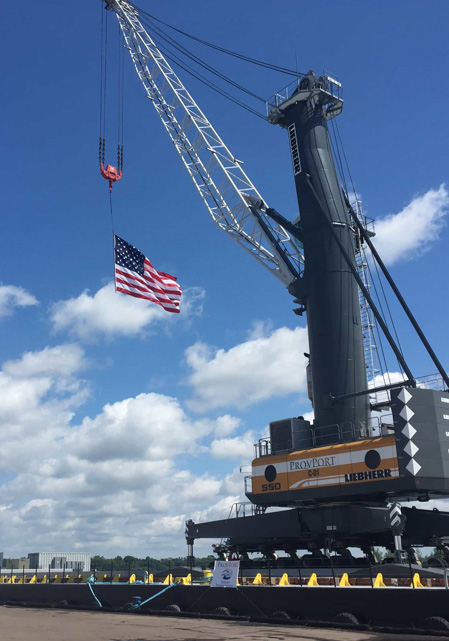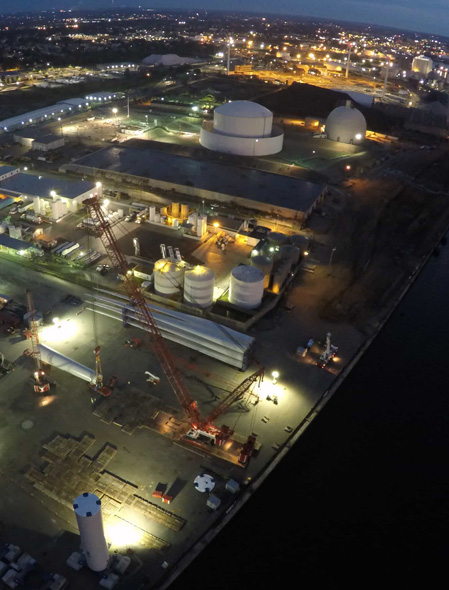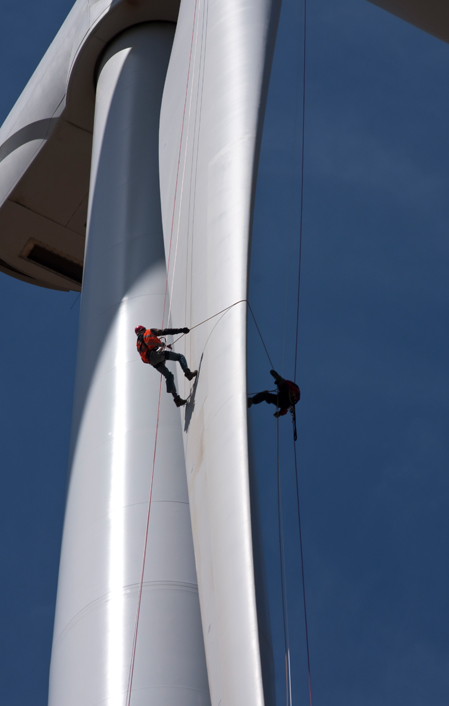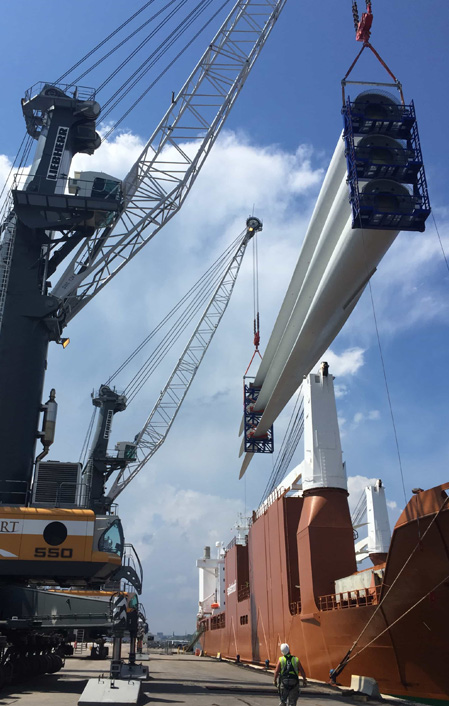An Interview with Chris Waterson
General Manager, Waterson Terminal Services
ProvPort is a 115-acre facility located on Narragansett Bay in Providence, Rhode Island. Waterson Terminal Services (WTS) is a regional terminal manager and stevedore and we’ve managed ProvPort since 2007 though an agreement with the City of Providence. We’re headquartered in Providence and we also have stevedoring operations in the port of Davisville, Rhode Island, and the New Bedford Marine Commerce Terminal in Massachusetts. WTS is a family company started by my father Bruce in 2000.
We were the staging location for the Block Island Wind Farm in 2016 and that experience has pushed us into seeing what more we can do in this industry. We are still the only port operation in the US to have successfully staged an offshore wind farm. The two-turbine Coastal Virginia Offshore Wind (CVOW) pilot project was staged out of Canada.
By their nature, ports are involved in most areas of the Blue Economy, but offshore wind in particular is a tremendous opportunity, not just in Rhode Island but throughout the region.
In April, there was an announcement by Ørsted and Eversource, who have partnered to develop offshore wind farms in the Northeast, that was transformational for port development. They plan to make the first move toward making ProvPort into a regional offshore wind hub by developing a new advanced foundation component facility to support the assembly of their portfolio of offshore wind farms.
This is a very big deal both for ProvPort and the industry. This is really what we were all waiting for. It’s a significant investment in a US port to support manufacturing activities for offshore wind. It’s a significant land area, as well. It will initially take up over 20 acres of the port, along with a 228-foot-long building. The facility will help support manufacturing not just for the current projects but hopefully for the whole pipeline of projects to come. It also puts Providence and Rhode Island on the map more broadly for being a major player in offshore wind. The world-class port facilities we have here can easily service the industry from the Gulf of Maine to New Jersey. That’s a big area and there are a lot of projects.
Offshore wind is just a tremendous opportunity. I’ve gone over to Europe a couple of times and toured some of the ports that have been servicing the offshore wind industry for 20 years. I felt an appreciation for not just the scale of the components that are handled but the scale of the operations that form up around it. It’s like going down to the Gulf of Mexico and looking at the entire industry that has been built up around offshore oil & gas—shipbuilding, cargo handling, support vessels, etc. Even now, we’re servicing offshore wind survey vessels at ProvPort. That’s a whole new business for us that didn’t exist a couple of years ago. The vessels come in and we hire linemen to tie them up and we support crew changes and provide fuel. Every time you think you have the whole industry nailed down and you know everything that needs to be done, something else pops up.
For example, we handle bulk material. I never thought about the need for bulk material handling for offshore wind, but there is scour protection stone that goes at the base of every single foundation. A port is needed to handle that rock, and a local quarry might be needed to supply it. There are all sorts of offshoots to the supply chain that will eventually be built up around this industry and you can’t even imagine what it’s going to look like right now based on only having seven turbines in the water.
Because of all the opportunities in the Blue Economy in general and offshore wind in particular, WTS is looking to expand, not just at ProvPort, but also Davisville and New Bedford, both of which figure to be heavily involved in offshore wind. We’re also helping the development of the South Quay property. This is a major port infrastructure project on the other side of Narragansett Bay from ProvPort, in the City of East Providence. South Quay is very important, in my view. The more suitable port space you have for the industry, the better off you’ll be if you’re going to attract this early-end investment and get set up for the future.
Preparing the ports for offshore wind was a balancing act, especially in the early days of the industry. Developers were initially focused within the states where they had purchase agreements.
But as the facilities get established and you look five, ten years down the road, there will be a lot of regional collaboration. The states that move first and attract investment will be well positioned for the entirety of the industry for decades to come.

